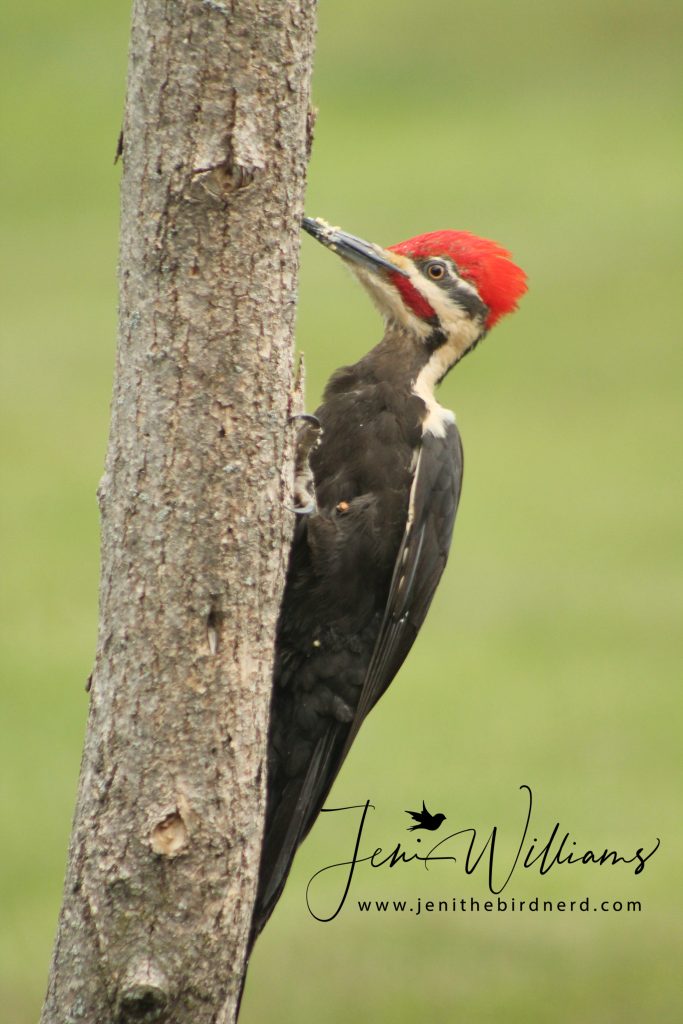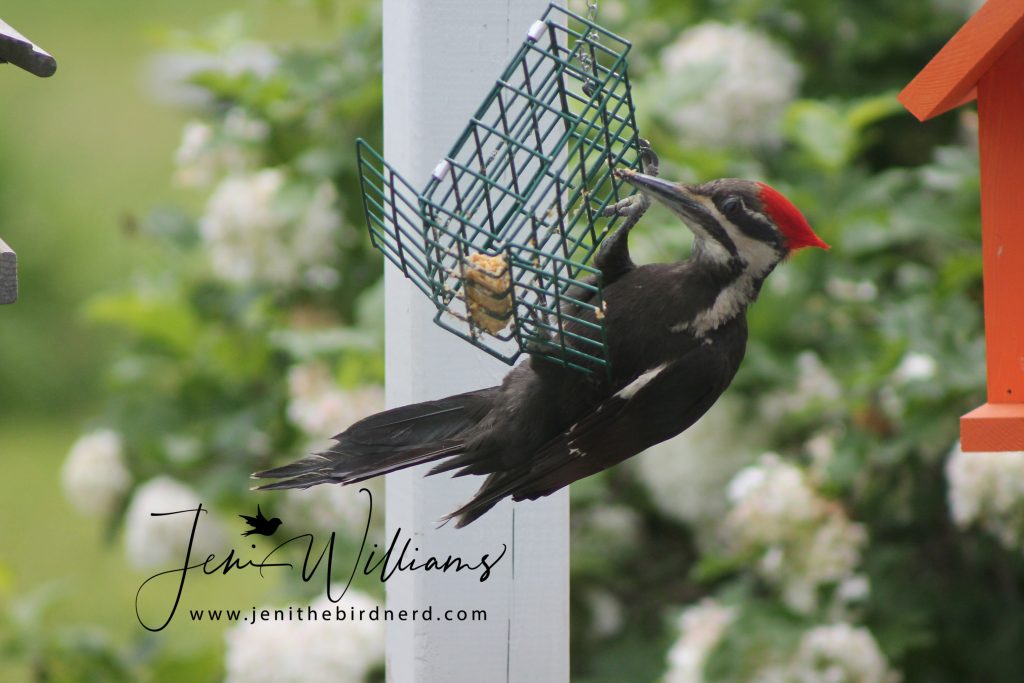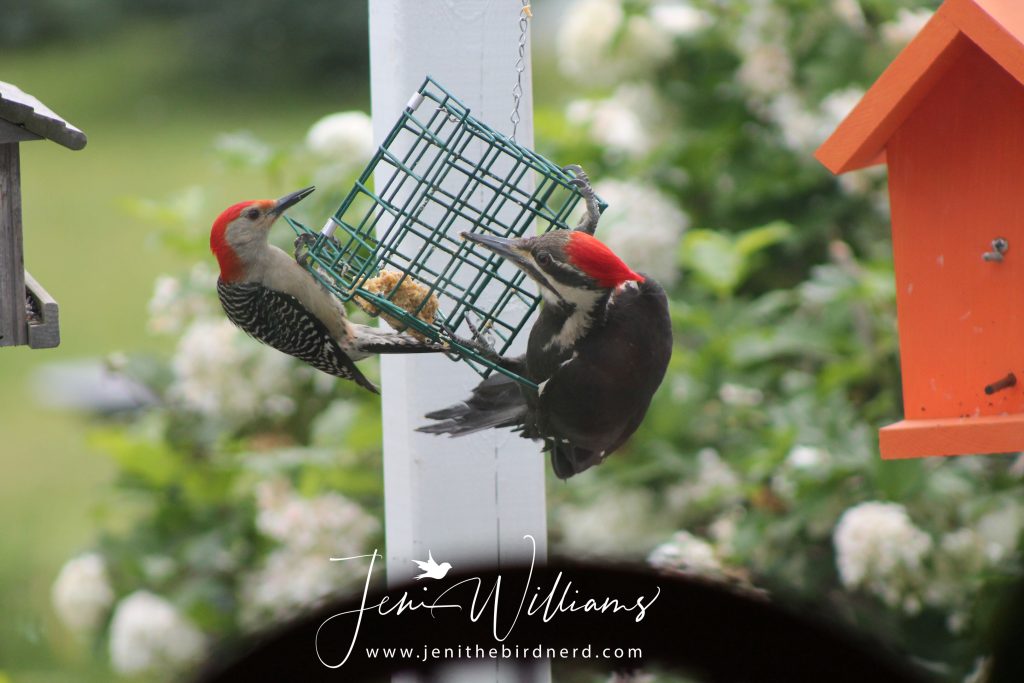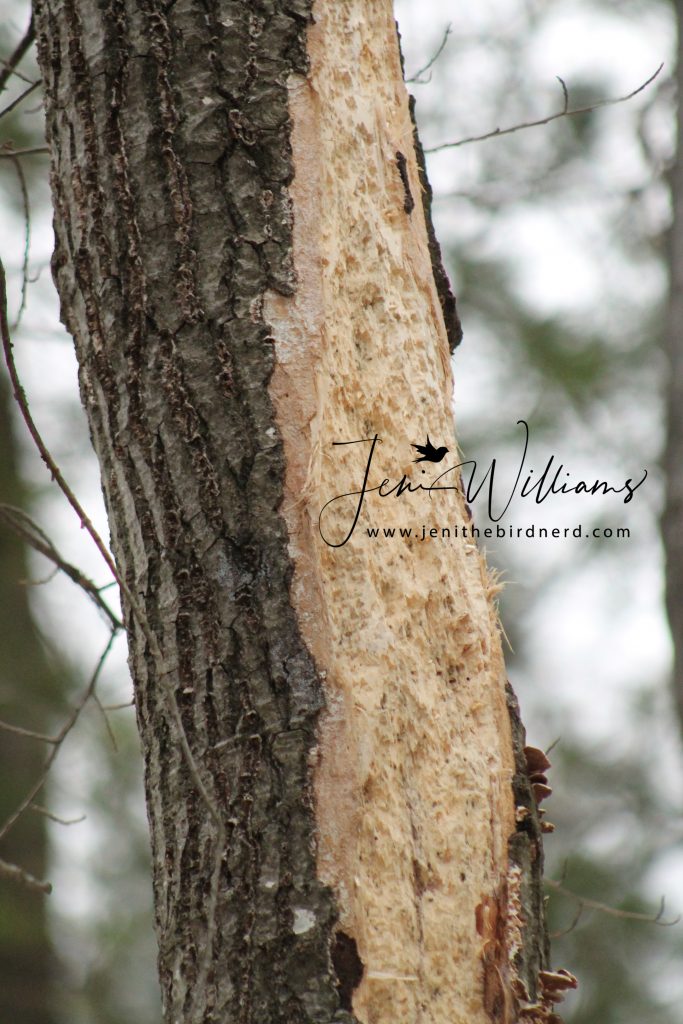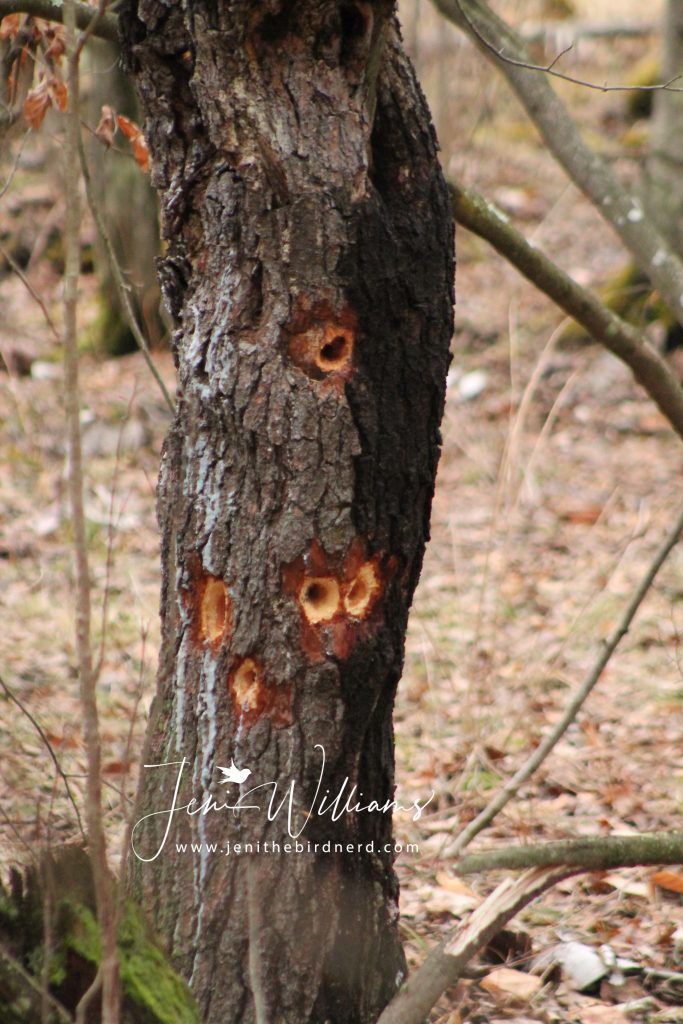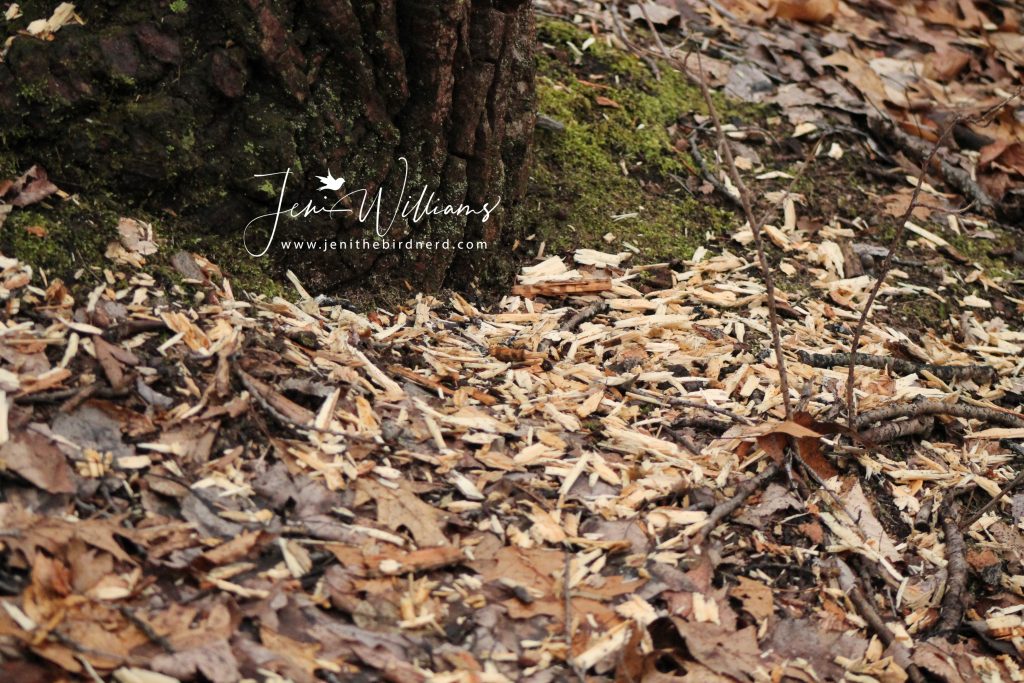It’s no secret that woodpeckers are in my top two species of birds; behind owls, of course! There are more than 180 woodpecker species throughout the world. Tonight I’m focusing on the Pileated woodpecker. The Pileated woodpecker is the largest woodpecker species found in North America measuring up to 18 inches long and has a wingspan of 28 inches! In our area of Michigan, we commonly see Downy, Hairy, Red-bellied, Red-headed and Pileated woodpeckers. In future posts, I’ll feature each of these birds as they each have distinctive differences. Their habitat consist of deciduous or mixed deciduous-coniferous woodlands and occasionally they can be found in suburban areas with large trees.
As seen in the next few pictures, you’ll notice that the female Pileated doesn’t have the red stripe on its face like the male shown below. The two pictures following the male pictured below, are of a female; most likely this male’s mate.
Woodpeckers have zygodactyl feet, meaning that they have two toes in the front and two toes in the back, which help them balance and tightly grip to vertical surfaces. Did you know that woodpeckers can peck up to 20 times per second? They use their bills to bore holes in mostly dead trees to search for insects and larvae, their primary diet. Males also use their bills to excavate holes in trees to create nesting cavities to raise their young. The female will lay a clutch of 3-5 eggs and will incubate them for 15-18 days. They raise only one brood of young every year. The pair is monogamous and have a large territory that they will cover and protect. Pileated woodpeckers have been known to use nesting boxes and you can download plans to build your own by visiting here.
The Pileated woodpecker eats primarily carpenter ants, larvae, flies, caterpillars, wild fruits and nuts, tree sap, and can occasionally be seen eating from suet feeders and stealing nuts from birdfeeders.
The pictures of the woodpeckers I’ve posted, were taken in my yard while the woodpecker holes and cavities were taken on the Kenneth J. Lehman Nature Trails on MCC’s campus. It’s a favorite pastime of mine, hiking on the trails and looking for fresh signs of the Pileated woodpecker.

